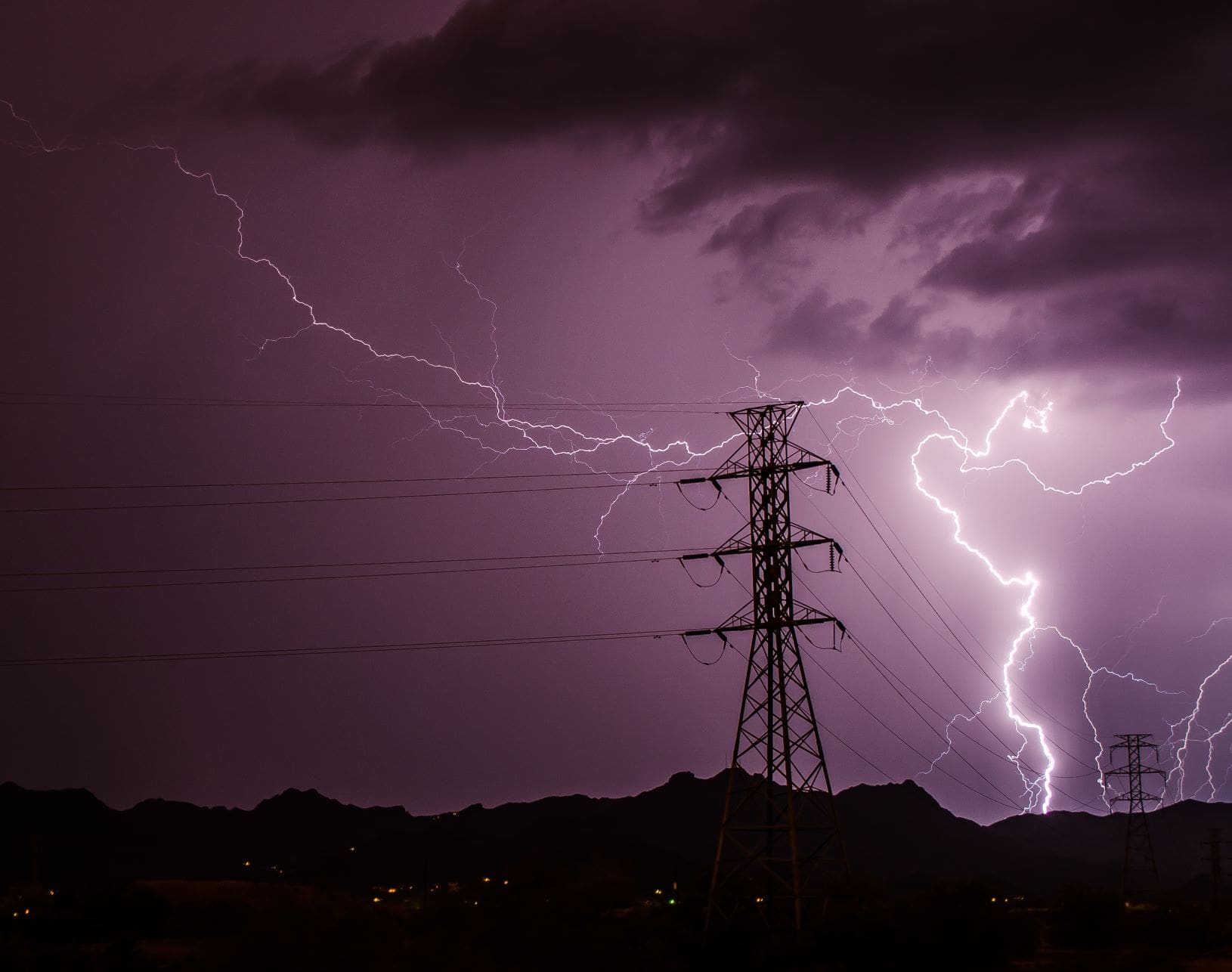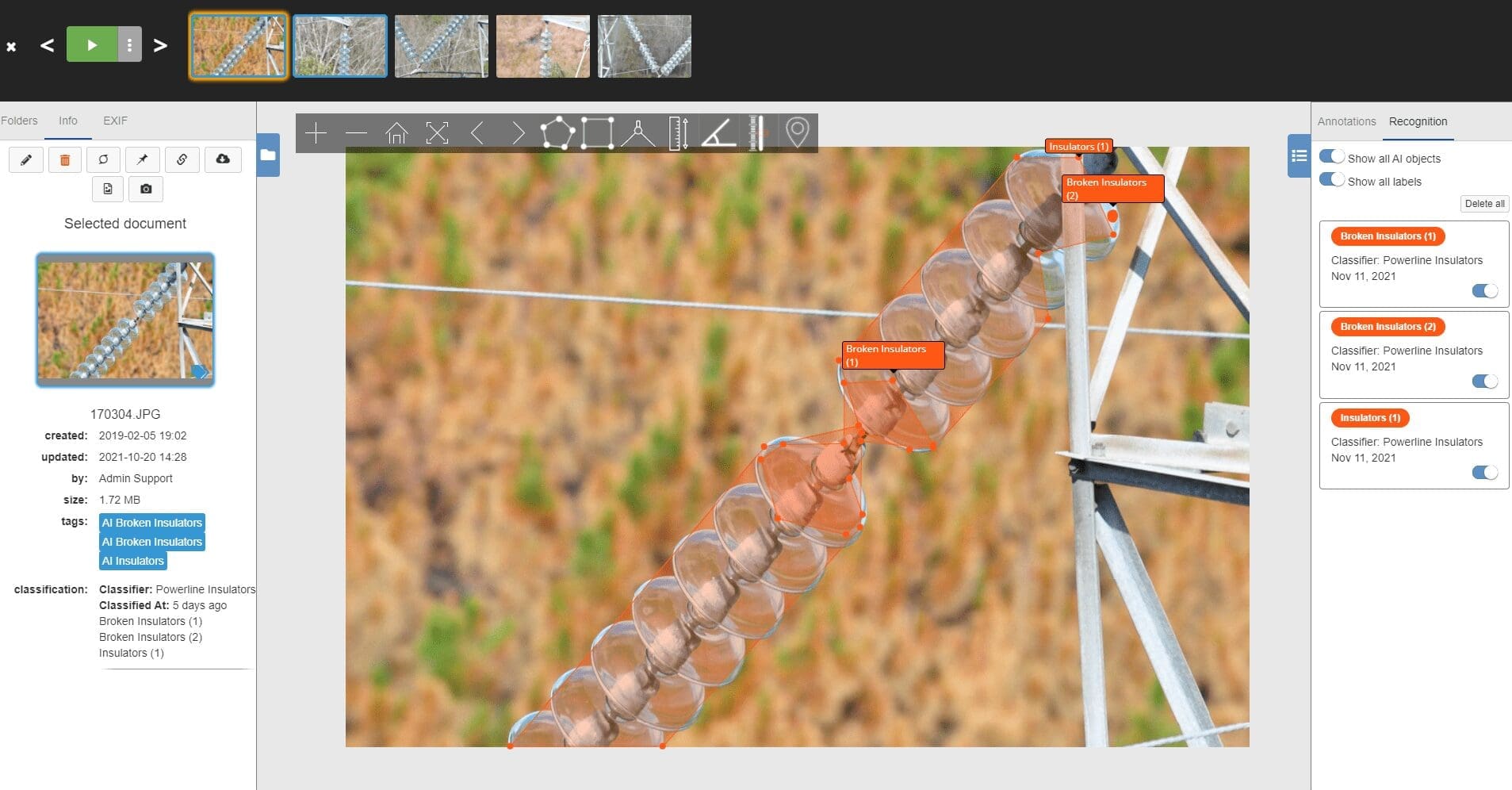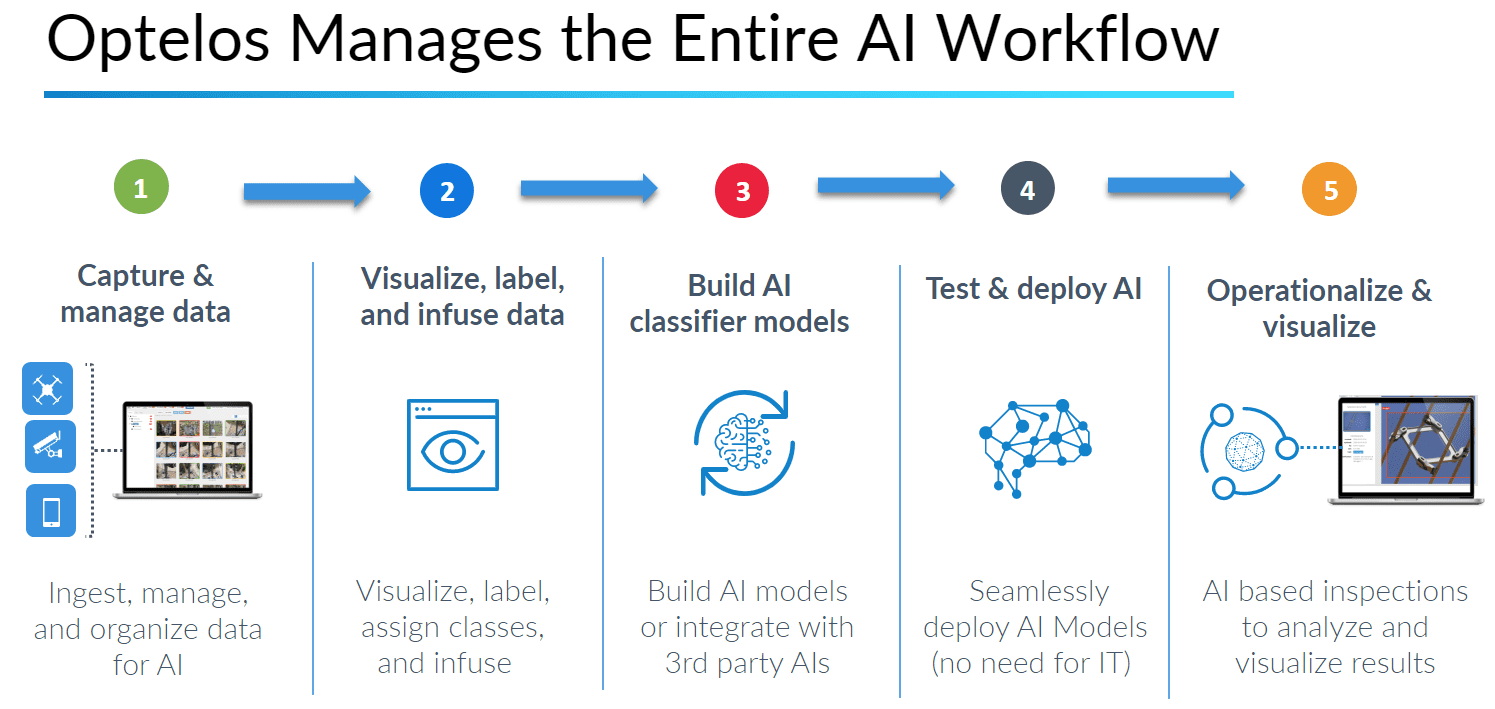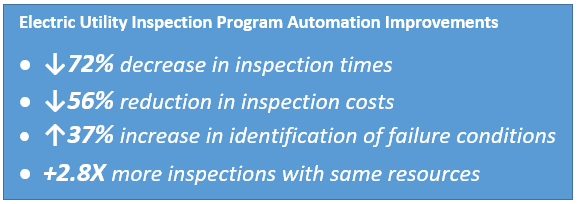Drone Powerline Inspection with AI Offers Advantages
Utilities in power generation, transmission and distribution are turning to aerial power line inspections to increase the frequency, scope and accuracy of energy infrastructure maintenance. Discovering, prioritizing and repairing degraded asset conditions more quickly has a direct impact on the bottom line by improving operational performance, safety, and energy transmission capacity while reducing systemic risk and litigation liabilities. But adding the capacity to inspect more often and more completely is difficult in the current labor market, as finding, hiring and training new technical personnel is extremely challenging. According to the 2020 Employment Report from the National Association of State Energy Officials (NASEO), 84% of energy employers are experiencing difficulty in hiring qualified workers. This challenging trend is expected only to worsen, as an estimated 40% of current electric utility workers are eligible for retirement by 2030.

Figure 1: Lightening strikes on high voltage transmission infrastructure can result in holes burned in metallic skins, puncturing of composite structures, hot spot formations and welding or roughening of moveable hinges and bearings.
Mounting Environmental Impacts Require More Transmission Line Inspections
Power utilities require diligent inspection and preventative maintenance programs to keep assets performing safely and at peak efficiency due to the many environmental stresses to which they’re subjected. High voltage lines typically cross thousands of miles across suburban, mountain and forest environments and are routinely exposed to damaging environmental conditions such as extreme temperature and humidity variations, lightening strikes, rain, ice, wind induced vibration, and impacts from vegetation encroachment. These factors cause corrosion, induce fatigue failures that reduce the lifetime of the lines, or lead to conductor slap or high impedance (HiZ) faults that can result in wildfires if undetected and left unrepaired. Significantly increasing inspection frequency and intensity to catch these issues before they impact operations is very difficult, however, given resource and cost constraints.

Figure 2: Manual infrastructure inspection utilizing ground-based personnel using legacy methodologies is reliable but doesn’t scale
Traditional Manual Inspection Methods Effective But Resource Intensive
Current manual inspection methods are time-proven, but problematic because they do not easily scale. Inspecting a single transmission line using legacy methods may involve gathering data via multiple remote visits throughout the year, which can be in a variety of formats, such as images, videos, drawings, or even handwritten notes. Inspectors then use proprietary processes to identify, measure, and categorize issues and damage like corrosion, broken or loose equipment (fasteners, stanchions, insulators, vibration dampeners, jumper cables or corona rings), as well as monitoring vegetation encroachment. Despite the best efforts, there still could be missed preventative or corrective maintenance issues identified due to human factors (eye strain, visual acuity, training/experience, attention fatigue), image issues (resolution, focus, lighting, angle) and data issues (missing images, lost files, corrupted files, or data security/access protocols that make the data difficult to access).

Figure 3: Power utilities are increasingly turning to drone electrical inspection with artificial intelligence and machine learning (AI/ML) to improve the accuracy and capacity of their asset inspection programs
Case Study
“Automating Grid Analytics Through Drone Inspection and Computer Vision AI”
Read about the partnership between Optelos and ComEd

Electric Utilities Turning to AI/ML to Improve Inspection Efficiency and Capacity
In order to address their increased transmission line inspection goals and existing personnel challenges, power utilities are increasingly turning to drone powerline inspection with AI to improve the accuracy and capacity of their asset inspection programs. With recent advances in the field of artificial intelligence and machine learning (AI/ML), specifically computer vision AI, digital inspection technologies are enhancing existing workflows and allowing enterprises to stretch available team resources further by automatically detecting, diagnosing, prioritizing and planning repair and preventative maintenance work. Electric utility customers have traditionally used surveillance and remote-control tools to handle inspections, with many industry-leading energy companies already engaged in digital inspection of their assets. The cost and safety improvements of using UAV power line inspection with AI/ML are clear, but managing the increased flow of inspection data and adapting these technologies to the existing workflows presents challenges.

Figure 4: As a capable and scalable drone data management platform, Optelos offers utilities a reliable data management foundation for building an automated inspection program.
Effective Data Management is Critical to Automated Drone Powerline Inspection
Capable and scalable drone data management platforms such as Optelos offer assistance to electric utility companies looking for data management options they can build their automated inspection programs upon. Optelos, which is AI engine neutral and compatible with all AI engines, allows customers to choose the best-of-breed AI solution for their particular application (Optelos also has partnerships with AI vendors for enterprises seeking assistance in this area). The Optelos SaaS platform offers the ability to manage the complete AI workflow within the platform, from initial implementation through training and improvements, to ongoing inspection administration and API-based systems integrations to automate ticketing & dispatch, resource management and inventory visibility. This allows organizations to effectively and simply integrate the benefits of automated inspections into their workflows without requiring extensive IT administration, asset procurement or hiring requirements.

Figure 5: The Optelos platform effectively manages the entire AI workflow, from data capture and ingestion through labeling, building classifier models, deployment & brain training to systems integration and action automation.
High ROI and Improved Inspection Program Efficiency
Global power utilities rely on Optelos for managing their artificial intelligence inspection programs utilizing computer vision AI and machine learning. These installations have on average experienced decreased inspection times of 72%, reduced costs by 56%, improved inspection accuracy by +37%, and an inspection capacity improvement of 2.8x using the same team resources. The entire computer vision AI workflow is managed within the Optelos platform, eliminating data silos and parallel work streams and enabling faster brain training and algorithm improvements.

If you’re interested in learning more about how Optelos can help your power utility reduce its inspection program costs, improve its safety profile, accuracy or capacity through the application of computer vision AI and autonomous drone inspection, reach out to us today through the “Get Started” link below. We can address your questions on the capabilities of the platform and, by understanding your objectives and visual data management challenges, we can recommend a solution to help you meet your program goals within your budget and timeframe.
